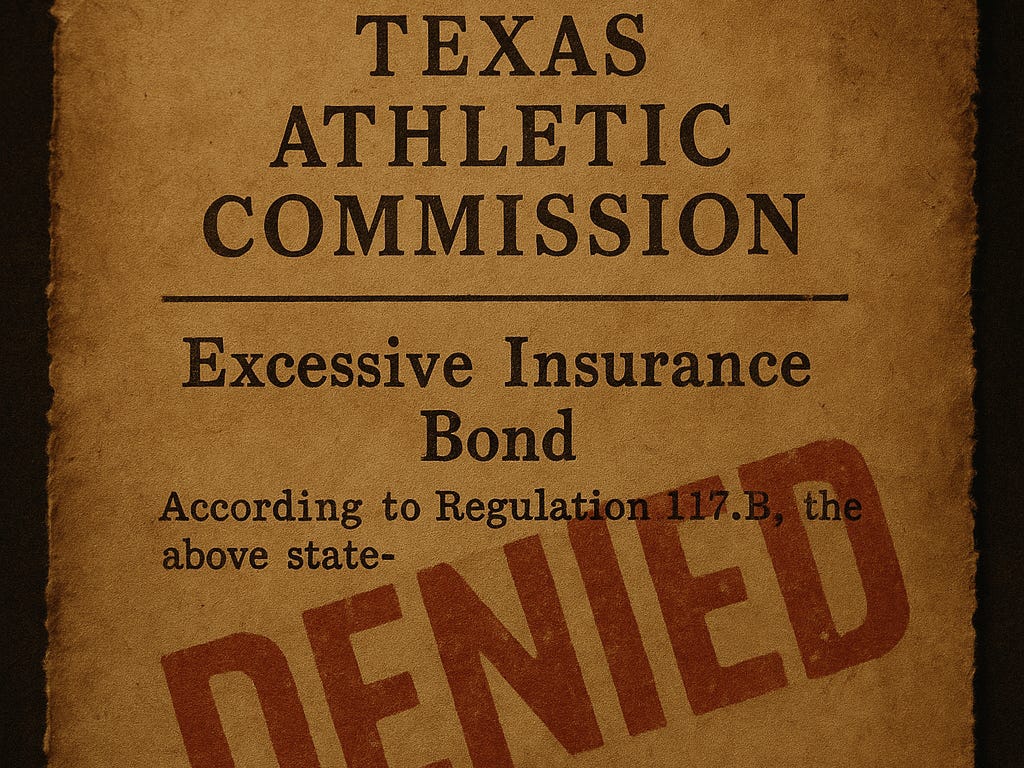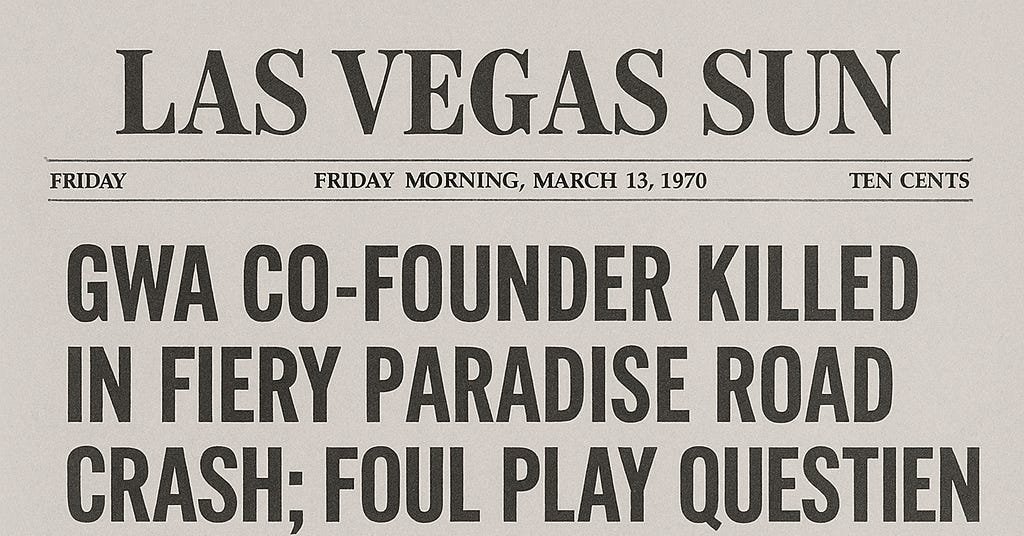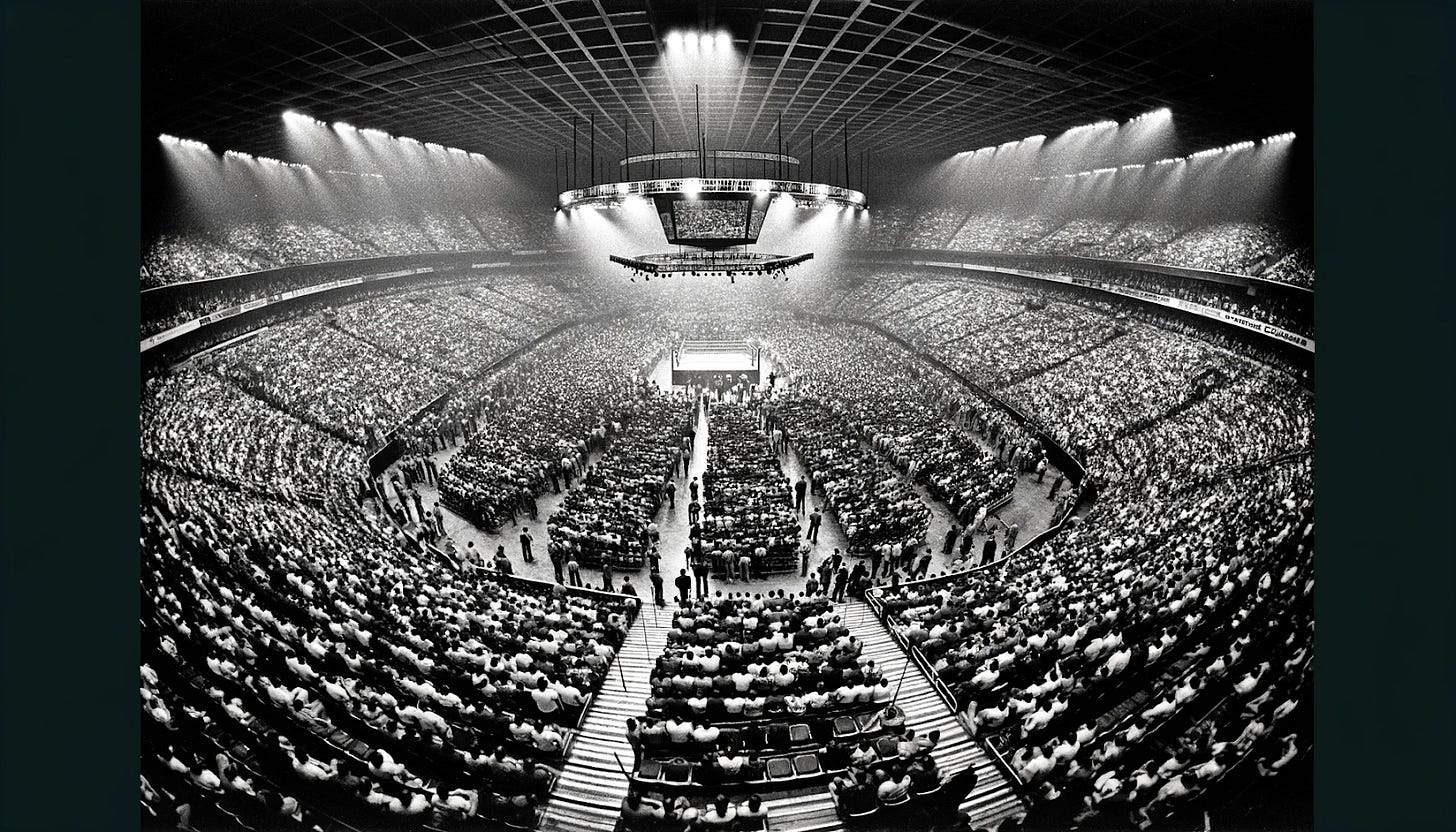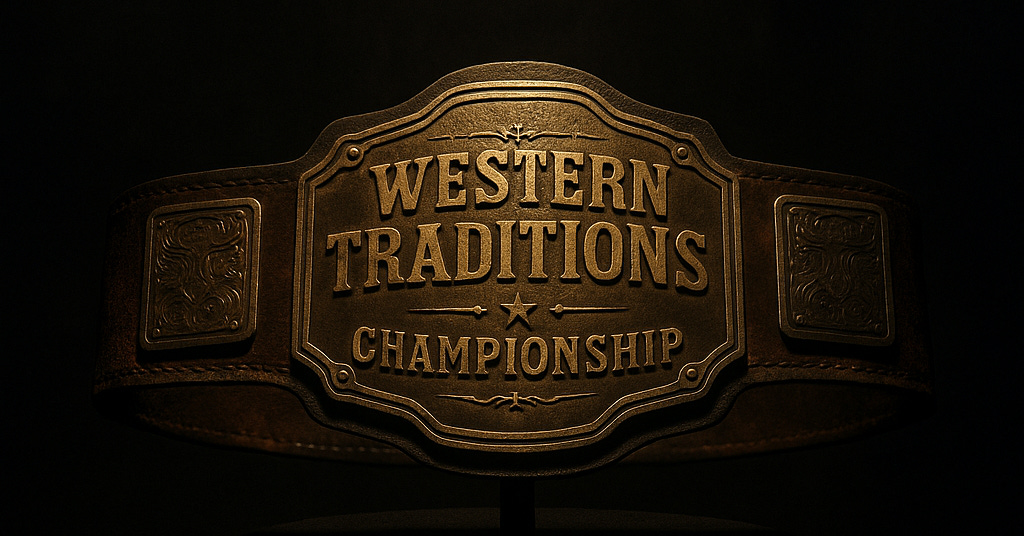The Four Bells: How Harbingers Forged the GWA Eras
Miss these four seismic “Bell” moments and you’ll never understand why titles, territories, and rivalries unfold the way they do from here on out.
Every legend has a turning point. The GWA had 4—the pivotal moments that heralded new eras of struggle & triumph, forging the soul of wrestling's most ambitious experiment. This piece presents an imagined history, intertwining fact and fiction to explore pivotal moments in wrestling history.
In the annals of professional wrestling, a bell does more than signal the start or end of a match; it announces a moment of truth. It is the sound that separates anticipation from action, triumph from defeat, and one chapter from the next. The history of the Great Western Wrestling Alliance is not a simple sequence of years on a calendar but an epic told by the sound of four distinct bells. These were the watershed moments, the “harbingers,” that didn’t just mark a transition but actively forged the identity of the eras that followed.
While we define these eras by specific "bells" or harbingers, it's crucial to acknowledge that historical periods are rarely as neatly demarcated as a calendar year. These dates represent the dominant shifts and defining characteristics, but the forces at play often emerged gradually and lingered beyond their official end, creating a natural overlap and continuous evolution within the GWA's story.
Each harbinger proclaimed a fundamental challenge that forced the GWA to adapt, evolve, and redefine itself. Each era that followed was a response, a struggle for the very soul of the promotion. This timeline reflects not only the evolution of wrestling but the transformation of America itself. To understand the GWA, you must first hear the echoes of these four bells.
The First Bell: The Frontier Era (1957-1968)
The first bell was not rung in an arena, but in the halls of government. It was heralded by a bureaucratic appointment: in 1958, Robert "Bobby" Kincaid, a former boxing promoter with a personal vendetta against founders Jack Carson and Miguel Ramirez, secured a position on the Texas Athletic Commission. This event proclaimed that the GWA's path would be a fight for its very existence. Kincaid wielded his authority to create a labyrinth of targeted regulations—excessive insurance bonds, complex talent screenings, and severe restrictions on television licenses—all designed to strangle the fledgling promotion in its cradle.
This systematic opposition became the GWA’s baptism by fire. The fight of the Frontier Era was for Legitimacy. Blocked from major arenas, the GWA cultivated deep, authentic connections in the small towns and high school gymnasiums of the West. Barred from television, they innovated with radio broadcasts on XEOJ-AM that brought the action crackling into homes across the territory. This era represented the forging of the GWA's identity. Out of necessity, it built a reputation on grit, determination, and a level of professionalism that set it apart from wrestling’s questionable carnival past. Kincaid’s attempt to destroy the GWA had accidentally forced it to become the most reputable promotion in the territories.
The Second Bell: The Expansion Era (1969-1975)
While the second bell began ringing the prior year, it was a sound of shattering loss. On March 12, 1970, following a contentious venue dispute in Las Vegas, co-founder Miguel Ramirez was killed when his car went off the road under deeply suspicious circumstances. This tragedy proclaimed an abrupt and brutal end to the GWA’s reliance on handshake deals and the founders' personal bonds. It heralded a new and dangerous world where ambition carried a heavy price.
The fight of the Expansion Era was for Inclusion. With Ramirez’s intuitive, art-driven vision gone, the GWA had to build systems that could sustain growth without losing its soul. This fight manifested in the creation of new championships and divisions for Women, Junior Heavyweights, and Tag Teams, honoring a wider array of wrestling styles. This era represented a "Broadening of Horizons," a necessary transformation from a passionate, family-run enterprise into a sophisticated business operation with formal contracts and a defined management structure, all while striving to preserve the authentic spirit Ramirez had championed.
The Third Bell: The Golden Age (1976-1987)
The third bell sounded not in a ring, but in the roar of nearly 40,000 fans. On July 3, 1976, the GWA held its inaugural Showdown Spectacle in the Houston Astrodome, a massive gamble that became a paradigm shift. The event, headlined by Harlem Hurricane unifying the World and Great Western titles against the corporate machinations of The Baron, B. Beauregard Blackthorn, was a colossal financial success, drawing a gate of over one million dollars. It proclaimed, on the eve of America's Bicentennial, that principled, story-driven wrestling could triumph on the grandest stage.
The fight of the Golden Age was for Authenticity. At the zenith of its popularity, with soaring television production and larger-than-life characters, the GWA fought to maintain its athletic credibility. The success of Showdown Spectacle proved that audiences craved sophisticated, interconnected storylines over simple gimmicks. While embracing the spectacle of the era, the promotion’s core commitment remained on presenting wrestling as a legitimate contest. This era represented "Mythmaking," the period when the GWA became a true cultural force, validating its founding principles and proving that wrestling could be both high art and blockbuster entertainment.
The Fourth Bell: The Traditions Era (1988-1993)
The final bell was a quieter, more solemn toll, rung by a dual crisis in 1987: the creative decline of a dominant storyline and the economic instability following the Black Monday stock market crash. This confluence of events proclaimed the end of the boom times. It heralded an age where the GWA would face a wrestling landscape that was rapidly consolidating and corporatizing around it.
The fight of the Traditions Era was for its Legacy. As competitors shifted toward a more cartoonish presentation, the GWA made a principled choice. The consolidation of regional championships into the singular Western Traditions Championship was not just a business necessity, but a statement. The GWA fought to preserve its unique identity, emphasizing technical excellence and celebrating its own history over chasing mainstream trends. This era represented a conscious effort to uphold the promotion's heritage, a period of resilience where the GWA defined itself not by its growth, but by the values it refused to compromise.
These four moments—these four bells—were more than transitions. They were tests of principle that forged the GWA’s character. Their echoes tell the story of professional wrestling's most ambitious experiment—a tale of triumph, tragedy, and tradition that we will now begin to explore, starting where it all began: in the dusty, foundational days of the Frontier.






